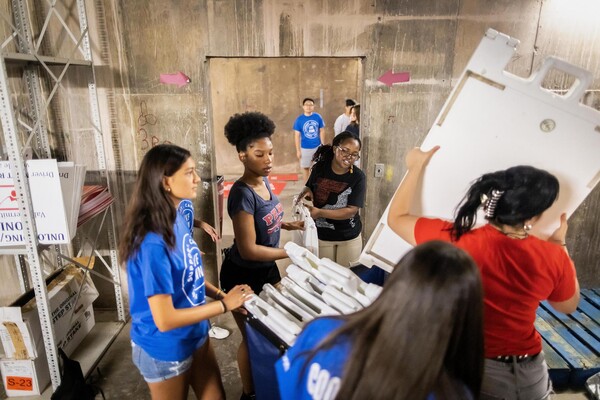Advice for aspiring script writers from a pro
Imagine and describe a character for a script and then consider what that character wants more than anything in the world. The key to great writing, according to award-winning screenwriter and director Andy Wolk C’70, is that the story should not be about that desire, but rather a problem thrust on the character that “smacks” them away from the initial want.
Wolk presented this idea and others at a three-day “Symposium on Writing for Film, Theatre and TV” at the Kelly Writers House the week of Feb. 1. The symposium was a two-part workshop in which aspiring Penn screenwriters submitted an application in order to participate in one-on-one sessions with Wolk.
The second portion of the symposium, held on Feb. 3, was open to the public. In it, Wolk gave an instructional presentation on the elements of good screenwriting. He stressed story structure as the key to good and interesting writing and placed great importance on the development of character. Wolk invited participation by asking the audience to quickly describe a character and then consider the formula of character setup and eventual life-changing experience.
Wolk showed several scenes from his movies and others that inspired him to highlight such writing techniques. He began with a fragment of the opening scene from the 1978 film “Kramer vs. Kramer” that he said informed his own scene creation. To set up a character, he said, “Show them doing what they are doing when the worst possible thing that can happen to them happens to them.”
He then showed portions of his own work, including “Natica Jackson,” the 1987 winner of the Writer’s Guild Award, and “Criminal Justice,” named one of Time’s “Ten Best” and cable movie of the year for 1990, to exemplify this paramount principle of the screenwriting craft.
Wolk’s other film credits include “A Town Without Christmas” and “Deliberate Intent,” which both received rave reviews. Wolk has also directed episodes of “The Sopranos,” “NYPD Blue,” “The Practice,” “Equal Justice” and others. He has also been a creative advisor for Sundance Labs, on which the symposium was modeled.







